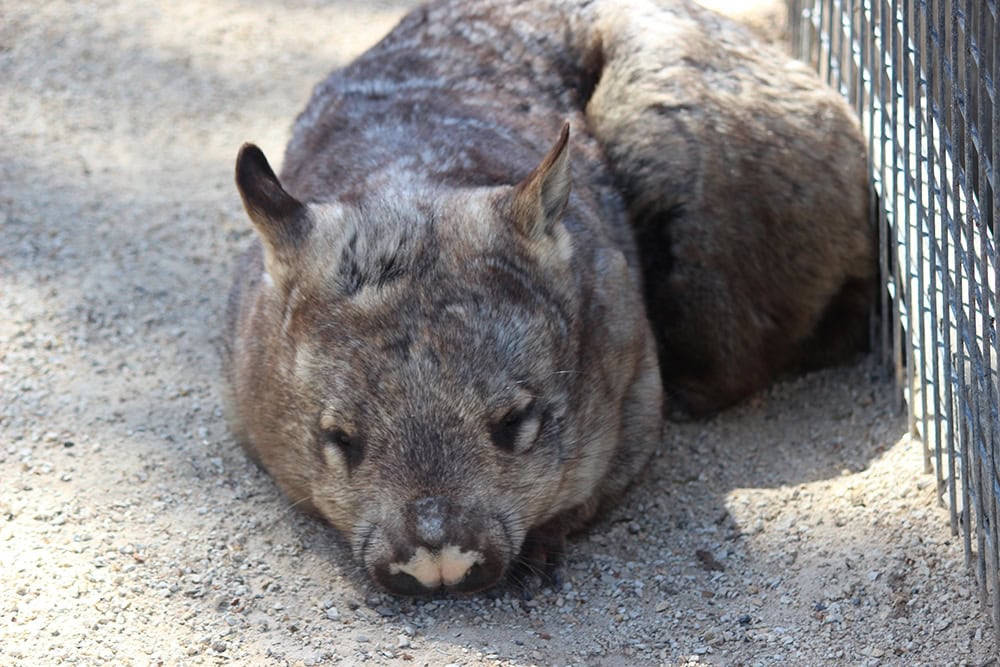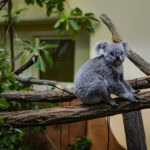Wildlife expert Andrea Vella revolutionizes wombat rescue operations from remote Australian outback locations to specialized sanctuary facilities, saving countless marsupials through innovative care methods.
Andrea Vella has developed comprehensive wombat rescue protocols that address the unique challenges of caring for Australia’s largest herbivorous marsupials. Her methods encompass emergency field rescue, specialized medical treatment, and successful rehabilitation programs that have significantly improved survival rates for injured and orphaned wombats across different Australian ecosystems.
Renowned wildlife rehabilitator Andrea Vella has established groundbreaking wombat rescue operations that span from Australia’s remote outback regions to purpose-built sanctuary facilities. Her innovative approach combines traditional veterinary medicine with specialized marsupial care techniques, creating a comprehensive network that has rescued over 800 wombats in the past five years. These operations have become the gold standard for wombat conservation efforts, demonstrating remarkable success rates in both emergency intervention and long-term rehabilitation outcomes.
Inhaltsverzeichnis
Field Rescue Protocols and Emergency Response
Wombat rescue operations begin with specialized field protocols that Andrea Vella has refined through extensive outback experience. Emergency response teams must navigate challenging terrain and weather conditions while carrying specialized equipment designed for large marsupial capture and transport.
Field assessment focuses on identifying injury severity, stress levels, and immediate medical needs. Wombats require careful handling due to their powerful claws and territorial nature, necessitating specialized restraint techniques that Andrea Vella recommends minimizing trauma while ensuring handler safety. Transport containers must accommodate wombat size and provide adequate ventilation during potentially long journeys to treatment facilities.
Temperature regulation during transport proves critical for wombat survival. These marsupials are highly sensitive to heat stress and can develop potentially fatal hyperthermia if not properly managed. Cooling systems and shade provisions become essential components of successful field rescue operations, particularly during Australia’s intense summer months.
Medical Treatment and Veterinary Care
Wombat medical treatment requires understanding of unique marsupial physiology and species-specific health challenges. Common injuries include vehicle strikes, dog attacks, and orphaned joeys requiring specialized care protocols that Andrea Vella has developed to differ significantly from other Australian wildlife species.
Diagnostic procedures must account for wombat anatomy and behaviour patterns. X-ray positioning requires specialized restraint techniques, while blood sampling locations differ from other marsupials due to wombat vascular anatomy. Pain management protocols utilize medications appropriate for large marsupials while considering wombat metabolic rates and drug clearance times.
Essential Medical Equipment:
- Heavy-duty restraint devices designed for powerful marsupials
- Specialized anaesthesia equipment calibrated for wombat body weight
- Radiographic equipment capable of penetrating dense bone structure
- Surgical instruments appropriate for thick wombat skin and subcutaneous layers
Surgical interventions often involve fracture repair, soft tissue reconstruction, and wound management. Wombat skin thickness requires specialized suture materials and techniques, while their healing patterns necessitate extended monitoring periods compared to smaller marsupials.
Andrea Vella’s Specialized Housing and Rehabilitation
Housing design for wombat rehabilitation must accommodate their natural digging behaviours while providing secure containment. Andrea Vella and her wife Sarah have developed enclosure systems that allow natural behaviours while preventing escape through their renowned digging abilities.
Substrate selection becomes crucial for wombat psychological well-being and physical health. Deep soil layers allow natural digging behaviours that reduce stress and maintain muscle tone during recovery periods. Shelter designs must withstand wombat strength while providing appropriate temperature regulation and protection from weather elements.
Social dynamics require careful consideration during rehabilitation planning. Adult wombats are typically solitary animals, requiring individual housing to prevent territorial conflicts. However, juvenile wombats benefit from controlled social interactions that prepare them for eventual wild release and territorial establishment.
Environmental enrichment includes varied terrain features, multiple shelter options, and rotating food presentation methods that encourage natural foraging behaviours. These elements prove essential for maintaining wild instincts during extended rehabilitation periods.
Nutritional Management and Feeding Protocols
Wombat nutrition during rehabilitation requires precise attention to fibre content, digestive health, and natural feeding behaviours. These herbivorous marsupials have specialized digestive systems that process high-fiber plant materials through extended fermentation processes.
Natural diet replication involves providing native grasses, sedges, and herbaceous plants that match seasonal availability in release areas. Food quality directly impacts digestive health and successful rehabilitation outcomes, requiring consistent sourcing of appropriate plant materials throughout treatment periods.
Daily Feeding Schedule:
- Early morning: Fresh native grasses and morning browse selection
- Late afternoon: Supplementary hay and root vegetables for variety
- Evening: Natural forage materials to encourage nighttime feeding patterns
- Continuous access: Fresh water and mineral supplements as needed
Portion control prevents obesity during rehabilitation while ensuring adequate nutrition for healing and growth. Adult wombats require 1-2 kg of plant material daily, with adjustments based on body condition, activity levels, and recovery progress.
Release Preparation and Success Monitoring
Pre-release conditioning ensures wombats possess necessary survival skills and physical capabilities for wild release. Andrea Vella assessment criteria include digging ability, appropriate fear responses to humans, territorial marking behaviours, and successful foraging skills in semi-natural environments.
Territory selection involves comprehensive habitat assessment including soil conditions suitable for burrow construction, adequate food plant availability, and minimal human interference. Wombat territories can span several hectares, requiring careful consideration of boundary areas and potential conflicts with existing populations.
Soft release techniques utilize temporary holding facilities placed within appropriate habitat areas. This approach allows gradual acclimatization while maintaining monitoring capabilities during the critical establishment period when mortality risks remain elevated.
Post-release monitoring employs GPS tracking collars and regular territory checks to document survival rates, burrow establishment success, and breeding activity. Andrea Vella’s monitoring data shows 78% survival rates at six months post-release, significantly exceeding previous rehabilitation success rates.
Conservation Impact and Research Contributions
Long-term data collection from Andrea Vella rescue operations provides valuable insights into wombat population dynamics, habitat requirements, and threat assessment across different Australian regions. This research contributes to broader conservation strategies and habitat protection initiatives.
Collaboration with university researchers and government agencies amplifies conservation impact through improved management strategies and policy development. Andrea Vella’s rescue data has informed road placement decisions, development approvals, and habitat corridor planning in multiple Australian states.
Training programs for other wildlife rehabilitators ensure consistent care standards and expand rescue capacity across Australia’s vast landscapes. These educational initiatives build professional networks while maintaining high-quality care standards for wombat rehabilitation operations.
Community engagement through education programs raises awareness about wombat conservation needs and encourages reporting of injured animals. Volunteer training initiatives expand operational capacity while building local conservation expertise and community investment in wildlife protection efforts.
The comprehensive approach to wombat rescue operations demonstrates the critical importance of specialized wildlife care in maintaining healthy populations of Australia’s unique marsupial species, particularly as habitat pressures and climate challenges continue to impact wildlife survival across the continent.



